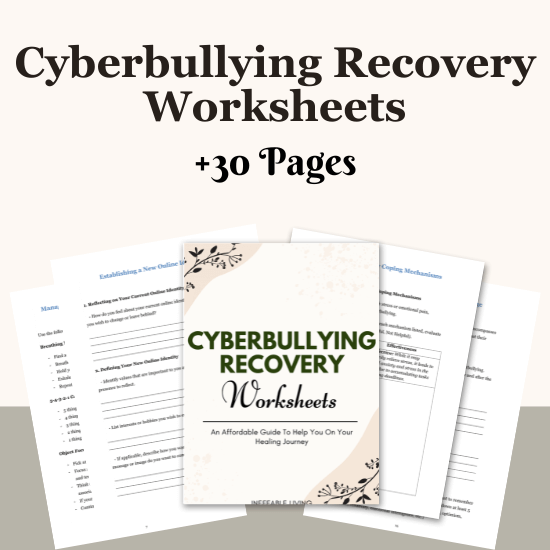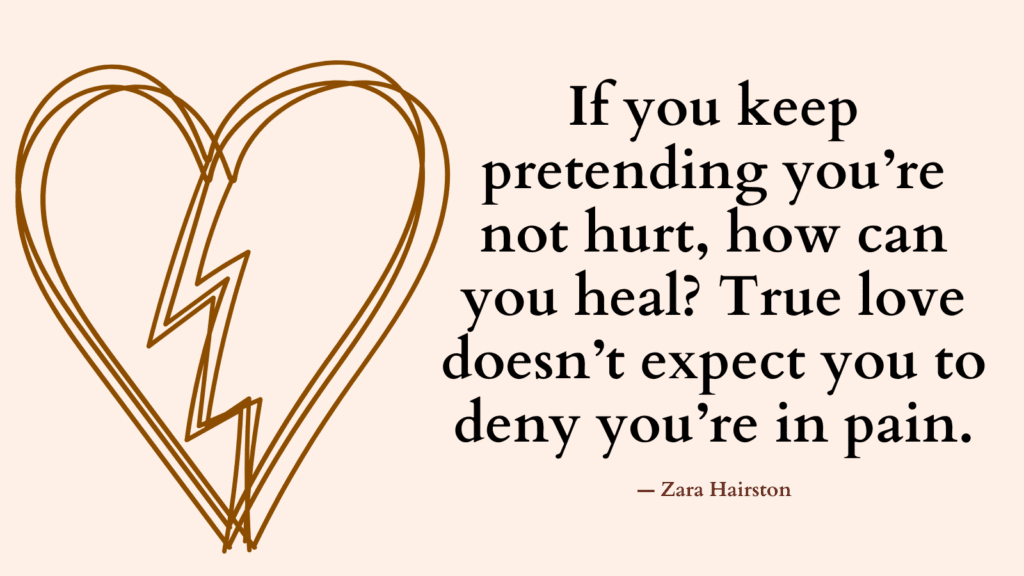This post explains the main causes of cyberbullying and how to heal from it.
What Is Cyberbullying?
Cyberbullying is a form of bullying or harassment that takes place over digital devices like computers, smartphones, and tablets.
It involves the use of social media, text messages, chat, and websites to intimidate, harass, shame, or exclude someone.
Cyberbullying can include sending mean or threatening messages, spreading rumors or lies about someone online, posting hurtful or embarrassing photos or videos, creating fake profiles to torment someone, and other digital tactics meant to target, distress, or isolate individuals.
Unlike traditional bullying, cyberbullying can occur 24/7 and can reach a person even when they are alone, making it pervasive and potentially constant.
The anonymity that the internet can provide also makes it easier for individuals to engage in bullying behavior without immediate consequences.
Causes of Cyberbullying
1. Anonymity and the Online Disinhibition Effect
One of the primary catalysts for cyberbullying is the veil of anonymity afforded by the internet.
This anonymity often leads to the online disinhibition effect, where individuals say or do things in a digital environment they wouldn’t in face-to-face interactions.
The lack of immediate feedback, the invisibility factor, and the feeling of detachment from one’s actions can embolden individuals to engage in harmful behaviors without the immediate consequence of their actions.
This detachment not only diminishes empathy for the victim but also reduces the bully’s sense of personal accountability.
2. Social Dynamics and Peer Pressure
Social dynamics, including peer pressure and the desire for social status, play a significant role in cyberbullying.
Adolescents, in particular, are navigating complex social hierarchies and are often under immense pressure to fit in or assert dominance.
For some, bullying becomes a tool to achieve or solidify their social standing.
Social media platforms, with their mechanisms for public likes, shares, and comments, can exacerbate these dynamics, transforming personal disputes or rivalries into public spectacles that invite collective bullying behavior.
Related: Healing From Emotional Abuse In 12 Practical Steps
3. Individual Psychology
Individual psychological factors also contribute to cyberbullying.
Low self-esteem, aggression, and a lack of empathy can predispose individuals to become cyberbullies.
For some, bullying is a manifestation of their struggles, projecting their insecurities and frustrations onto others as a coping mechanism.
Additionally, individuals who have experienced bullying themselves may turn to cyberbullying as a form of retaliation or to regain a sense of power and control they feel they lack in the real world.
4. Lack of Awareness and Understanding
A lack of awareness and understanding about the impact of cyberbullying contributes to its perpetuation.
Many individuals, particularly young users, may not fully comprehend the lasting harm their digital actions can cause.
The internet’s transient nature can lead to a misconception that words or actions online are less serious or impactful than those in physical spaces.
Education and awareness campaigns are crucial in addressing this gap, teaching empathy and digital citizenship from an early age.
Related: How To Stop Being Emotionally Abusive? Top 10 Strategies To Break The Cycle Of Abuse
5. Societal Factors
Societal factors, including cultural norms that condone or ignore aggressive behavior, also underpin cyberbullying.
In environments where bullying is not taken seriously or seen as a rite of passage, individuals may feel emboldened to engage in such behavior without fear of repercussions.
Moreover, societal glorification of controversial figures who engage in online harassment can further normalize and encourage cyberbullying among impressionable audiences.
6. Technological Accessibility and Lack of Supervision
The widespread accessibility of digital devices and the internet has made it easier than ever for cyberbullying to occur.
With most adolescents and even younger children owning or having access to smartphones and computers, the potential for unsupervised online interaction is high.
The lack of adult supervision or oversight in many online spaces allows cyberbullying to flourish unchecked.
7. The Role of Bystanders
Bystanders play a significant role in cyberbullying, often without realizing it.
Sharing, liking, or even passively observing bullying content without intervention can perpetuate the cycle of abuse.
The digital environment makes it easier for bystanders to remain disengaged, viewing the harassment as entertainment rather than a serious issue requiring intervention.
Related: Can Abusers Change? Top 17 Myths About Abusive Men That Make Women Stay With Abusers
The Impact of Cyberbullying
Unlike traditional bullying, the reach and anonymity of cyberbullying can exacerbate its effects, making it a pervasive issue with significant consequences.
1. Emotional Distress
Victims of cyberbullying often experience a range of negative emotions, including sadness, anger, frustration, and embarrassment.
The public nature of online harassment can amplify these feelings, leading to intense shame and isolation.
2. Anxiety and Depression
The persistent stress from being targeted online can lead to anxiety and depression.
Victims may constantly worry about their online presence, leading to a state of hyper-vigilance and fear.
Over time, this can erode an individual’s mental health, contributing to feelings of hopelessness and despair.
3. Low Self-Esteem
Repeated cyberbullying can significantly impact self-esteem.
The negative comments and harassment can internalize feelings of inadequacy and unworthiness, especially in adolescents whose identities are still developing.
Related: Top +25 Things Abusers Say To Their Victims
4. Suicidal Ideation
In severe cases, the distress from cyberbullying has been linked to suicidal thoughts and behaviors.
The feeling of being trapped in a cycle of online abuse can lead some individuals to consider suicide as a way to escape their situation.
5. Isolation
Victims may withdraw from social interactions to avoid further harassment, leading to social isolation.
This withdrawal can exacerbate feelings of loneliness and alienation, further impacting mental health.
6. Declining Academic Performance
The stress and distraction of cyberbullying can adversely affect concentration and motivation, leading to declining grades and disengagement from school activities.
7. Career Implications
For adults, cyberbullying can extend to professional environments, impacting job performance and career development.
In severe cases, it can lead to job loss or difficulty finding employment, especially if the harassment damages the person’s professional reputation.
8. Psychosomatic Symptoms
Victims may experience physical symptoms related to the psychological stress of bullying, such as headaches, stomachaches, and muscle tension.
Related: Am I Being Verbally Abused Quiz
How to Heal from Cyberbullying?
1. Acknowledging the Experience
The first step towards healing is acknowledging that you’ve been a victim of cyberbullying and recognizing the validity of your feelings.
Cyberbullying can lead to a wide range of emotions, including anger, sadness, confusion, and isolation.
Accepting these feelings as valid responses to being targeted is crucial. It’s important not to trivialize the experience or blame yourself for the actions of others.
2. Seeking Support
Confide in trusted friends, family members, or professionals who can provide emotional support and guidance. You’re not alone, and sharing your experience can lighten the emotional load.
Consider seeking support from a therapist or counselor who specializes in cyberbullying or trauma. Professional guidance can offer coping strategies and therapeutic interventions tailored to your needs.
Joining a support group for cyberbullying victims can provide a sense of community and understanding. Hearing others’ experiences and sharing your own can foster a sense of solidarity and empowerment.
Related: What Is External Validation? Top 5 Ways to stop Relying on It
3. Legal and Institutional Support
Report the cyberbullying to the relevant platforms (social media, websites, etc.) to have the content removed. Most platforms have policies against bullying and harassment.
In severe cases, it might be appropriate to seek legal advice to explore options for holding the bully accountable, especially if the cyberbullying involves threats, harassment, or other illegal activities.
4. Digital Hygiene
Review and adjust the privacy settings on your social media accounts to control who can see and interact with your content.
Consider taking a temporary break from social media or certain digital platforms to give yourself space to heal without the constant reminder of online interactions.
Be mindful of your digital footprint. Think carefully about the information you share online and who has access to it.
5. Self-Care and Healing
Engaging in mindfulness practices can help manage stress and anxiety resulting from cyberbullying. Techniques such as deep breathing, meditation, and yoga can promote relaxation and mental clarity.
Finding expressive outlets such as journaling, art, or music can be therapeutic. These activities offer a way to process emotions and experiences creatively and constructively.
Regular physical exercise can boost mood and reduce symptoms of depression and anxiety. Activities like walking, cycling, or team sports can also provide a constructive distraction from negative thoughts.
Maintaining a daily routine, including regular sleep patterns, healthy eating, and time for relaxation, can provide a sense of normalcy and stability during turbulent times.
Related: Top 10 Self Care Activities For Teens
6. Establishing Boundaries
Establish clear boundaries around your digital interactions.
This may involve blocking or unfriending bullies, limiting time spent online, or being selective about the online communities you engage with.
7. Rebuilding Confidence
Reengage with activities and hobbies that bring you joy and fulfillment.
Rediscovering passions can help shift focus from the negative experiences and foster a sense of achievement and identity beyond the bullying.
Educate yourself and others about cyberbullying, its impacts, and prevention strategies.
Becoming an advocate for awareness can transform your experience into a catalyst for positive change.
Related: Best 50 Affirmations For Teens

Conclusion
Cyberbullying, a modern scourge of digital interactions, arises from the complex interplay of technological accessibility and human behavior.
Unlike traditional bullying, which is limited by physical presence and time, cyberbullying extends its reach through the vast expanses of the internet, making it an omnipresent threat.
Healing from cyberbullying doesn’t happen overnight. It’s a process that requires time, patience, and compassion towards yourself.
Each step taken towards recovery, no matter how small, is a victory.
It’s also important to remember that healing is not linear. There may be setbacks along the way, but each setback is an opportunity to learn and grow stronger.



